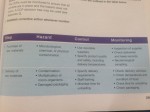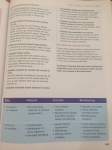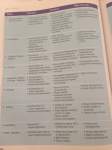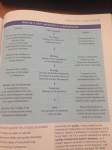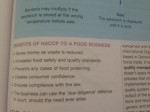‘Food safety is a right not a privilege.’ (Safefood 2007)
(a) To ensure that food is safe to eat, discuss the importance of each of the following:
food storage
![]() Cooking and reheating procedures
Cooking and reheating procedures
![]() kitchen hygiene. (24)
kitchen hygiene. (24)
6 points @ 4 marks each 2 points under each heading
![]()
![]() Storage – check fridge / freezer temperature; store perishable food below 5◦
Storage – check fridge / freezer temperature; store perishable food below 5◦
C; store frozen food -18◦C;
Check mould on vegetables; remove plastic from fruit and vegetables; raw and cooked foods should be
kept apart; check best before and use by dates; cool foods before refrigerating / freezing; storage areas
should be kept clean and well ventilated, etc.
🐔Cooking & reheating – defrost frozen foods completely (in the fridge); cook large joints of meat and
poultry thoroughly; use correct time and temperature when cooking; serve foods immediately; keep food
hot at temp above 65 ◦C 🍳
Consume hot food within 1.5 hours; reheat quickly above 100◦C; reheat once only. Keep food covered or in sealed containers before reheating; adhere to correct reheating times in the microwave, etc.🍵🍲
Kitchen hygiene 👐💦– floor, walls and work surfaces should be easy to clean; good lighting system; effective
ventilation to reduce condensation and growth of micro-organisms; clean water system to maintain
hygiene; no access points for pets; good kitchen hygiene should be in place and adhered to e.g.
HACCP, etc.
List the steps in a HACCP system
- Establish a HACCP team 2. Identify hazards and estimate the risks associated with the potential hazard 3.Determine critical control points to reduce or eliminate hazards. 4. Establish critical limits 5. Establish a system to monitor the control of CCPs 6. Take corrective action whenever monitoring indicates critical limits are not met 7. Establish procedures to verify that the HACCP system is working as planned. 8. Audit & review regularly.
Describe the stages in a basic Hazard Analysis and Critical Control Point (HACCP) system for making a hot meat dish. Refer to (i) possible hazards and (ii) the corresponding control measures to be implemented. (24)

